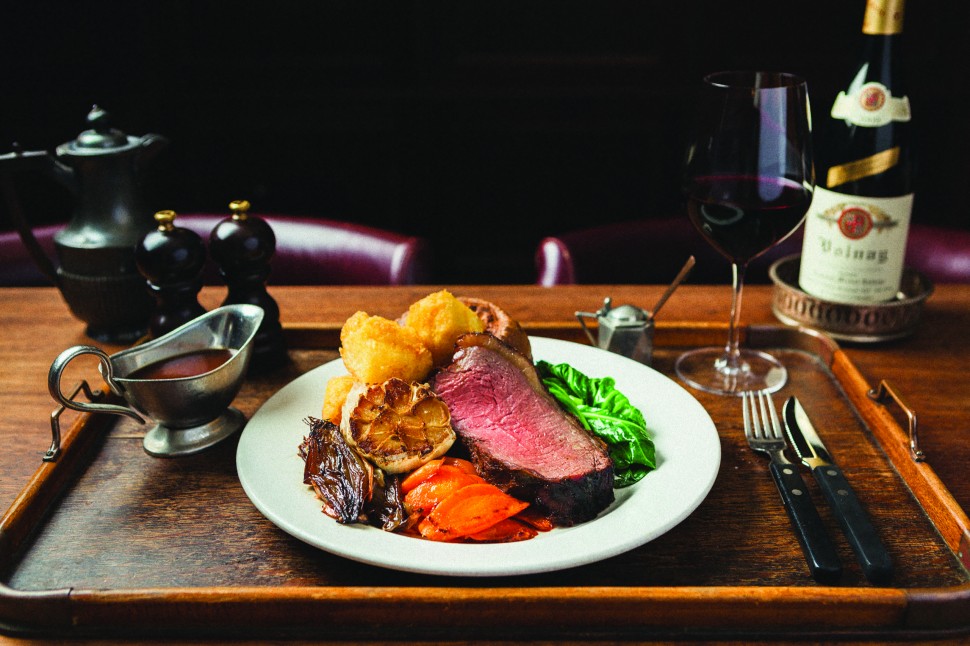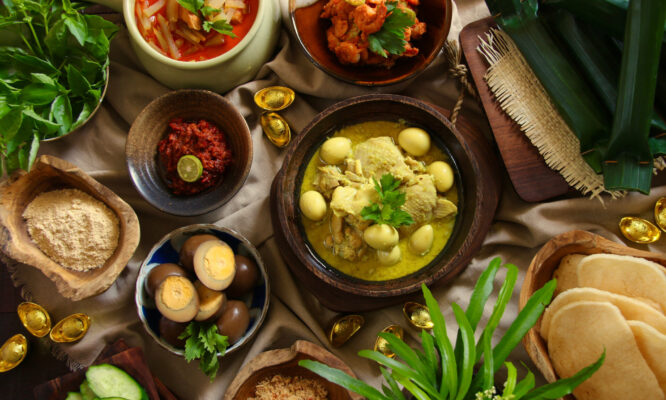Our definitive guide to the best London restaurants serving classic British fare


Ask the average British citizen about their favourite part of their national cuisine, and they’ll invariably point to their nearest curry house, where the focus is on tongue-flinching heat and packaged poppadoms rather than flavour, or to the chippy in the next town, where the fish is frozen, the batter is brought in, and the servers don’t care.
It all adds up to a culinary reputation Britain has struggled to shrug off. But that is certainly less the case now, as British people increasingly become more explorative with their food choices, while newer restaurants dip into their heritage beyond the usual meat and two veg. Right now, British food is in a good place, and London’s restaurants provide the best places to experience it.
Rules
Supposedly London’s oldest restaurant, Rules opened in 1798. A lot has been added to the wall hangings in the intervening 220 years, but much is the same – ale is still served in silver tankards, the bar and dining rooms are as ornate as people once liked them to be, and pies and oysters continue to be a main feature on the menu. Speaking of menu favourites, the rib of beef – I was once told by the MD – has probably never come off. What was a favourite dining venue for Charles Dickens and King Edward VII goes beyond being a novelty for tourists – Rules’ reputation for its food should be just as significant.
Hawksmoor

Once a religious tradition to break the week’s fast, the Sunday roast is an iconic dish in modern Britain. It’s widely thought that Blacklock, a meat-centric independent restaurant, does the city’s – if not Britain’s – best Sunday roast. It’s a solid contender, but between you and me, Hawksmoor is the best place to go for a serving of meat roasted over charcoal, Yorkshire pudding, crispy roast potatoes, vegetables and, of course, endless helpings of gravy. So why does Hawksmoor trample the competition? Maybe it’s the 55-day aged rump steak. Perhaps it’s the bone marrow gravy. Or is it those potatoes, roasted in duck fat? Why, all the above of course.
St John
Look at any successful head chef or restaurateur’s CV, and it’s likely a stint at St John is on there. Founder Fergus Henderson is just as recognisable as he has helped popularise the philosophy of going the whole hog by eating every part of the animal, from nose to tail. Due to French terminology on St John’s menu, some question whether we can legitimately call the food British – Fergus’ cookbook even calls his repertoire a ‘kind of’ British cooking – while others will posit that the food and the thinking offer enough references to Britain’s culture to warrant the label.
Lyle’s

From a distance, you’d guess Lyle’s was modelled on the French Bistronomie movement – an active fight-back against extortionate, elitist, and overly formal dining – as witnessed in Paris. But look a little closer and it’s decidedly representative of the British larder: Crumpets, Falmouth oysters, rhubarb, smoked eel and Isle of Mull cheese furnish the menu. Especially with ex-St John head chef James Lowe in charge, some think Lyle’s is the epitome of ‘modern British’ cuisine, where elegant simplicity is the dish du jour.
Quo Vadis
Quo Vadis is as old as Britain’s current queen. If she were to visit, if it wasn’t for the room named after Karl Marx (he was a frequenter to the restaurant), or the fact that, like so much of Soho, it was formerly a brothel, she’d very much approve. Food is as British as the enormous Union Jack fluttering outside – ‘pie of the day’ is central to the menu, which features other classics like kedgeree and sticky toffee pudding. The latter, along with the smoked eel sandwich, are signature dishes that mustn’t be passed up on anyone’s first visit.
Max’s Sandwich Shop

The Wall Street Journal once described the sandwich, coined in the 1700s by the 4th Earl of Sandwich, as Britain’s biggest contribution to gastronomy. Are they having a laugh? Not if they’ve visited Max’s Sandwich Shop, which is bringing the humble sarnie into the 21st century. Contrary to the name, it’s actually more of a restaurant. You’ll see why – large fillings such as the ham hock with fried egg, piccalilli and shoestring potatoes necessitate tables and greaseproof paper to help ensure it all goes in your mouth, not down your shirt.
Holborn Dining Room

The pie is such a celebrated part of British culture that we’ve named an entire week of the year after it. For Holborn Dining Room chef Calum Franklin, it’s a national obsession that’s fed into a personal one. Leading a team of 32 chefs, he makes decorative filled pastries more resemblant of porcelain ornaments than pies. Sure, the techniques he uses are similar to those of French pastry chefs of yore, but Calum’s British-themed creations – like his Wellington casings – are swiftly becoming one of the most eye (and stomach) pleasing things you can eat around town.
Rochelle Canteen

As the name might suggest, the food at Rochelle Canteen isn’t fussy. Rather, it’s rustic, maybe a bit rough round the edges, but most definitely the antithesis of the prettily arranged dishes people clamour for in Mayfair a short jaunt away. This is all part of Rochelle Canteen’s charm. There’s leek and potato soup. Stewed apples with meringue and cream. Venison pie. Oxtail casserole and mash. None of which are far off the dishes you’d have at the family dinner table, but done better than mum could.
Poppie’s
If you insist on having one of Britain’s national dishes, seek out Poppies. Unlike most fish and chip shops so common on U.K. high streets, cod and haddock are sourced from the legendary Billingsgate fish market (that is to say, thoughtfully and sustainably), filleted by Poppie’s in-house fishmonger, and fried to order. It results in probably the tastiest and most environmentally conscious battered fish you’ll find in the capital.
Sweetings

At 130 years young, Sweetings is the oldest London restaurant specialising in seafood. It does so without the frills (would you like your Dover sole grilled or poached?), and is customarily followed up with classic national desserts like spotted dick and bread and butter pudding. A self-anointed ‘lunchtime institution’, don’t be surprised to be rubbing shoulders here with suited city workers sipping Black Velvet cocktails (Guinness with champagne) on a weekday afternoon.
Anglo
Anglo’s owners only wanted to set up a small, quiet bistro. But within the first few weeks of opening, the restaurant garnered five-star reviews from the capital’s meanest food critics. The punters and their Instagram accounts followed, and if you wanted a table, you’d have to book months in advance. Two years on, and while the phone isn’t as busy, the largely British menu of ‘this is how it’s meant to be’ food is still just as good. Set aside some time for the 11-course menu and it might be the best few hours you’ll spend in London.









